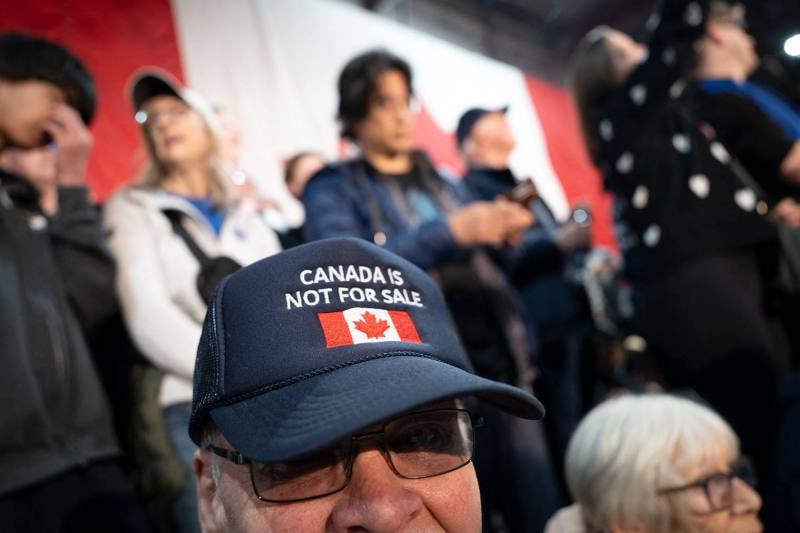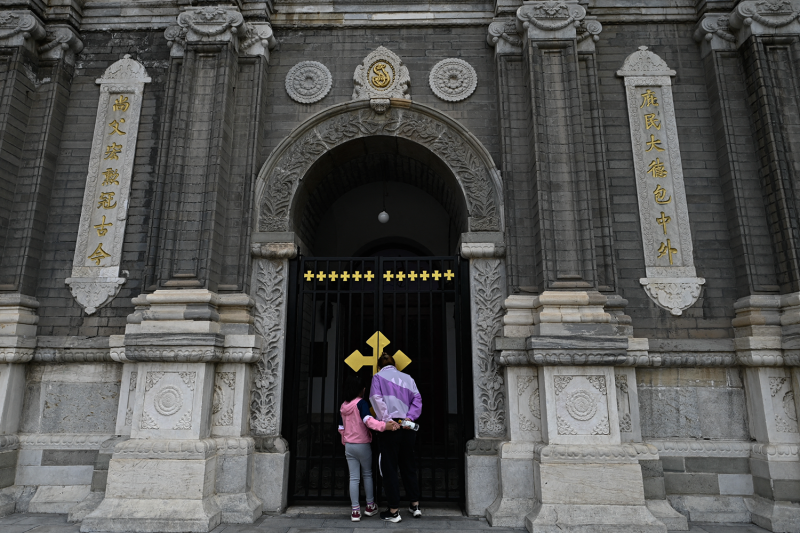Kashmir Attack Shatters Illusion of Calm

Kashmir Attack Shatters Illusion of Calm
New Delhi said normalcy had returned to the region, but the deadly violence against tourists shows that it needs to strengthen its defenses.
People hold a candlelight vigil to denounce a militant attack against tourists in Srinagar, Indian-administered Kashmir, on April 23. Yawar Nazir/Getty Images
In July 1995, when the militant insurgency in Indian-administered Kashmir was at its peak, a shadowy organization calling itself Al-Faran kidnapped six U.S. and European trekkers, along with two guides. When the militants’ demands that India release detained terrorists—including the group’s leader—were not met, they beheaded one of tourists. An American trekker escaped, but the others were never found and are presumed dead.
Following this horrific event, India went on to largely contain the insurgency in Kashmir, though its embers still burn nearly 30 years later.
In July 1995, when the militant insurgency in Indian-administered Kashmir was at its peak, a shadowy organization calling itself Al-Faran kidnapped six U.S. and European trekkers, along with two guides. When the militants’ demands that India release detained terrorists—including the group’s leader—were not met, they beheaded one of tourists. An American trekker escaped, but the others were never found and are presumed dead.
Following this horrific event, India went on to largely contain the insurgency in Kashmir, though its embers still burn nearly 30 years later.
In 2019, New Delhi revoked Indian-administered Kashmir’s special autonomous status, fulfilling a long-standing promise of the ruling Bharatiya Janata Party (BJP). In the wake of this decision, Indian Prime Minister Narendra Modi’s government argued that the abrogation of constitutional Article 370, which granted this status, brought a degree of normalcy to the region—highlighting a surge of tourism and infrastructure development. Violence had steadily declined, tourism had grown, and major projects were underway.
But last week, the apparent calm in the Kashmir Valley was shattered after militants attacked a group of mostly Indian tourists in Pahalgam, killing 26 people and wounding many others. It was the deadliest such incident in India since the 2008 Mumbai attacks. There was clearly a religious dimension to the Pahalgam attack: According to Indian reports citing eyewitnesses, the terrorists asked their victims to recite an Islamic verse before shooting them.
A relatively unknown organization called the Resistance Front (TRF) initially claimed responsibility; it emerged in 2019 and is widely believed to be a front for Lashkar-e-Taiba (LeT), a Pakistan-based terrorist group. However, TRF subsequently denied responsibility and accused Indian authorities of planting the claim. India has nevertheless asserted that the militants had ties to Pakistan, which Islamabad immediately denied.
The Pahalgam attack has once again ratcheted up India-Pakistan tensions after a significant lull. India, for the first time, is now actively considering shutting down the flow of water into Pakistan from Indus River tributaries, following its suspension of a key water-sharing treaty last week. Pakistan, which relies on the water for agriculture, has declared that any such move would be considered an “act of war.”
Meanwhile, Pakistan has already suspended the 1972 Simla Agreement with India, which among other matters recognizes the Line of Control (LoC) as the de facto international border in Kashmir and eschews the use of force to resolve their dispute over the region. Both countries have significantly reduced their diplomatic staff in their respective capitals.
Many observers are now asking which further retaliatory steps India is likely to take against Pakistan. If New Delhi follows through on its threat to block the flow of water across the border, it will amount to a “gradual turning of the screw”—part of a strategy of coercive diplomacy. Along with this measure, it can be assumed that India will set explicit goals that Pakistan will be expected to meet. If Islamabad fails to do so, New Delhi may then increase pressure in other ways, including boosting its military presence on Pakistan’s borders.
Whether these actions will induce compliance from Pakistan—assuming that it was complicit in orchestrating the Pahalgam attack, along with previous terrorist incidents—remains unclear. In the past, Islamabad has defied New Delhi’s efforts at forceful persuasion to end its involvement with terrorism in the region. In February 2019, for example, India’s so-called surgical strikes in response to an attack on Indian personnel in Pulwama—which was claimed by a Pakistan-based group—did not have their intended effect; Pakistan-based militants continued to launch attacks in Indian-administered Kashmir.
Questions also remain about last week’s attack. India bolstered its troop presence in Kashmir last year after an uptick in terrorist incidents in the region. Given substantial Indian deployments within Kashmir and along the LoC, it’s not clear how the militants managed to evade detection. Local police have implicated several individuals from within Indian-administered Kashmir. Still, much of Kashmir’s political class has unequivocally condemned the Pahalgam attack.
The brazenness of the attack suggests that Indian intelligence on a possible terrorist incident of this magnitude was lacking. It is possible that Indian authorities who were buoyed by the boost in tourism in Kashmir may have lowered their guard. In the aftermath of this attack, apart from devising a retaliatory strategy, India would be well advised to investigate possible lapses of intelligence collection and analysis and ascertain how the militants avoided the security dragnet in Kashmir.
India also urgently needs to forge a strategy of so-called deterrence by denial, which involves deploying forces in a way that makes it impossible or exceedingly difficult for an adversary to carry out an attack. This will require more efficient deployment of troops and enhanced intelligence gathering. New Delhi will also need to invest more in ground sensors and drones, locating them along the likely paths of infiltration.
For all of India’s messaging about restoring a degree of political normalcy to Kashmir, the Pahalgam attack and a host of other recent incidents belie this claim. At least four terrorist attacks took place in Kashmir last year, targeting both security forces and civilians. Though not as dramatic as the Pahalgam attack, these incidents underscored that India’s ability to ward off terrorists was clearly in question.
India faces significant hurdles in securing the LoC, owing to challenges of punishing terrain. But if it hopes to diminish the prospects of more terrorist attacks like the one targeting tourists last week, it will need to significantly strengthen its defenses. Otherwise, the tragedy in Pahalgam will hardly be the last.
Sumit Ganguly is a columnist at Foreign Policy and a senior fellow at Stanford University’s Hoover Institution, where he directs the Huntington Program on Strengthening U.S.-India Relations.
More from Foreign Policy
-

An illustration shows a line of large shopping carts facing down a small Donald Trump figure holding two shopping bags. The stars of China’s flag are in the upper left corner. Why Beijing Thinks It Can Beat Trump
China’s elites have a new confidence in their own system.
-

U.S. Army Chief of Staff Randy George speaks to U.S. soldiers at the Hohenfels Training Area in southern Germany on Feb. 6. A Drawdown of U.S. Forces in Europe Is All but Certain
Here’s how the Pentagon can rebalance its approach to the continent without sacrificing U.S. interests.
-

University of California, Los Angeles students, researchers, and demonstrators rally during a “Kill the Cuts” protest against the Trump administration’s funding cuts on research, health, and higher education in Los Angeles on April 8. Why Authoritarians Attack Universities First
A Yale professor and expert on fascism talks about why he’s leaving the United States under Trump.
-

Dwight D. Eisenhower looks over a piece of paper while sitting on a couch as Robert Cutler looks over his shoulder. How Generations of Experts Built U.S. Power
And now Trump is throwing it all away.











Join the Conversation
Commenting on this and other recent articles is just one benefit of a Foreign Policy subscription.
Already a subscriber?
.
Subscribe
Subscribe
View Comments
Join the Conversation
Join the conversation on this and other recent Foreign Policy articles when you subscribe now.
Subscribe
Subscribe
Not your account?
View Comments
Join the Conversation
Please follow our comment guidelines, stay on topic, and be civil, courteous, and respectful of others’ beliefs.
Change your username |
Log out
Change your username:
CANCEL
Confirm your username to get started.
The default username below has been generated using the first name and last initial on your FP subscriber account. Usernames may be updated at any time and must not contain inappropriate or offensive language.